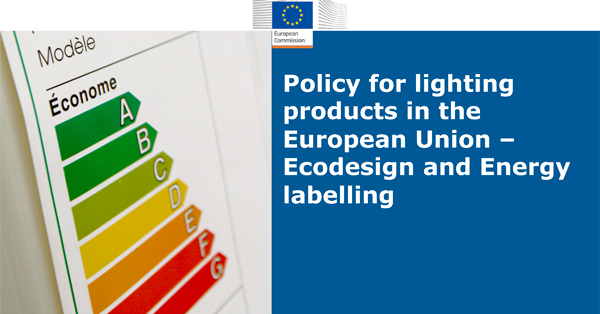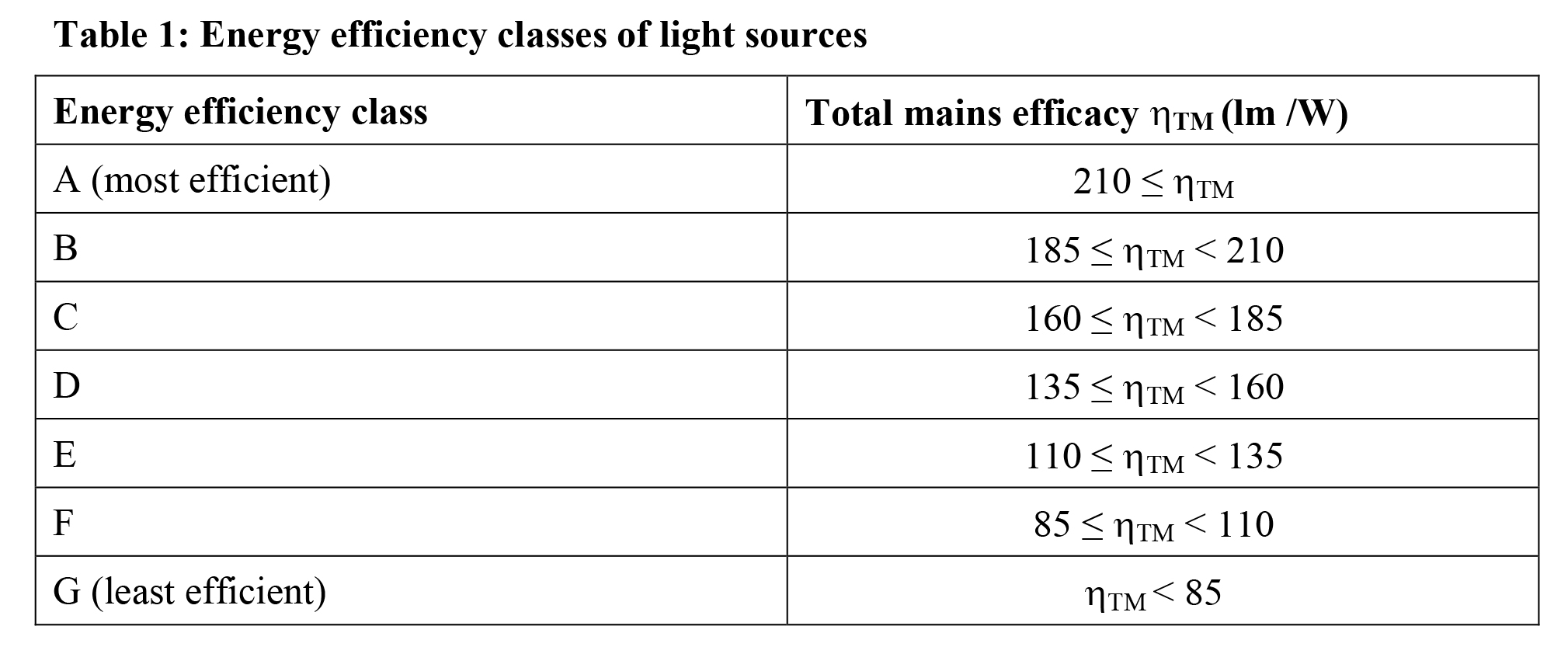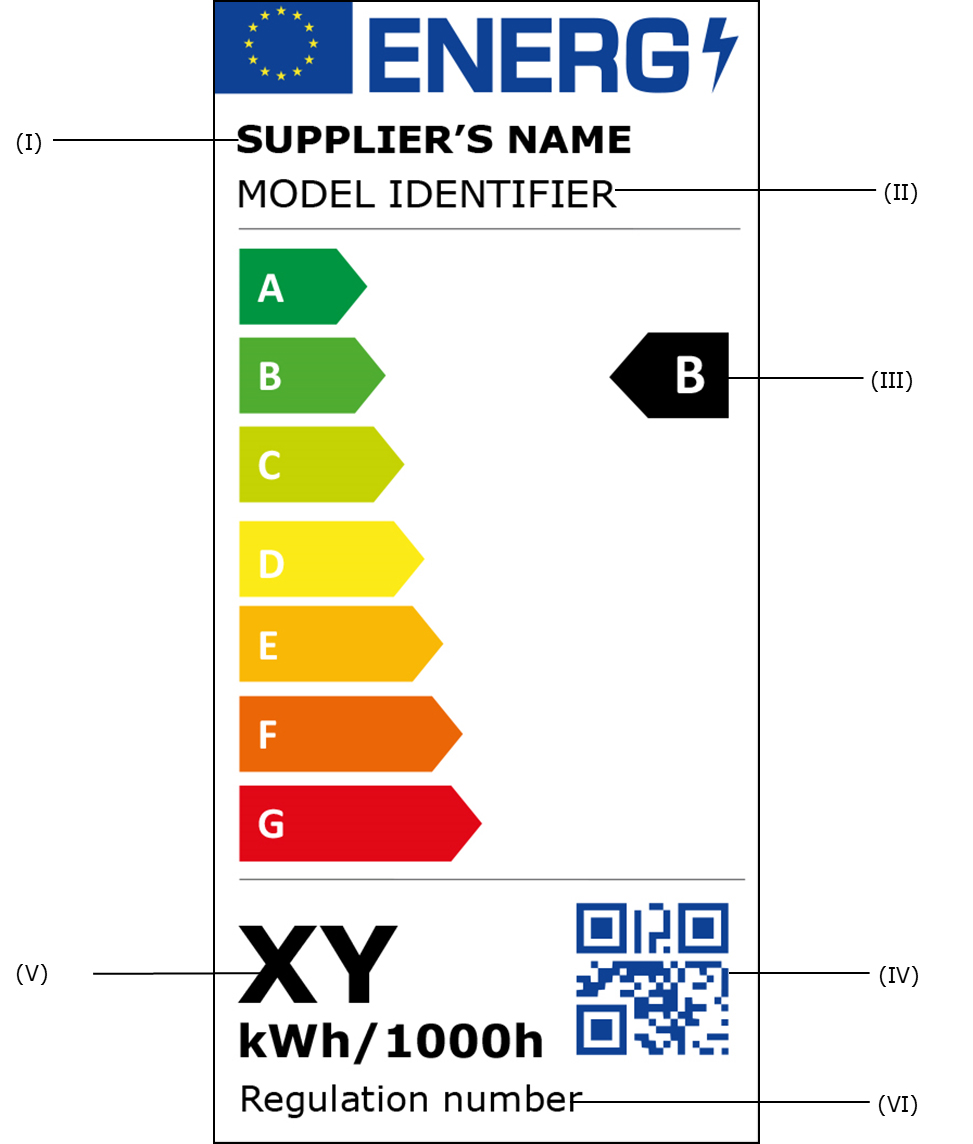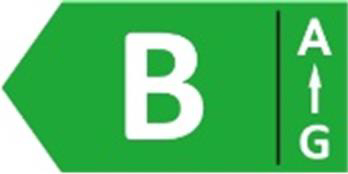How is the European legislation on the energy labeling of lighting fixtures changing?

The new European decree on the labeling of lighting fixtures proposed by the European Parliament (last draft sent on 6 November 2018) is being approved by the European Commission (last update 05/12/2018).
Which devices will the new rules apply to?
How will the new energy classes be calculated?
How should the new labels be?
We have tried to answer these and other questions starting from the draft law under discussion in these days (and remember that it can not be considered definitive until the decree issued by the European Commission is issued)
- Field of application
The decree applies to all light sources whose purpose is to “shed light”, in which light sources are used both when they are used alone and when they are placed on the market in a complex product such as mirrors, refrigerators or shelves.
The decree establishes the requirements for the labeling and provision of additional information on products on light sources with or without integrated control devices.
The field of application covers all lighting technologies, including incandescent, halogen, fluorescent, high intensity diodes and light emitting diodes (both inorganic and organic OLEDs).
- New classes of energy efficiency
The standard proposes a new formula for energy labeling that better reflects energy efficiency and is more intuitive in the calculation than the energy efficiency index established in the current regulation on energy labeling.
In the new metrics, the limits for the energy efficiency classes are defined directly in terms of the efficiency of the light source, as a result of the total light output of a light source (in lumens, lm) divided by the mains power (230 V ) input (in Watt, W) and expressed as lm / W.
This change implies that to obtain a given class of energy efficiency, light sources with a high light output do not need a higher efficiency than light sources with low light output. This is reasonable, considering that when the new energy labeling requirements start to apply, the label classes will mainly aim to differentiate LEDs based on their respective efficiencies.
Class limits are proposed with a difference of 25 lm / W between consecutive classes: all light sources above 210 lm / W are of class A. All light sources below 85 lm / W are class G.
As of June 2018, there are no light sources on the market able to meet the efficiency limits of classes A and B (but there are laboratory-based). So these classes would initially be empty, as required by Regulation (EU) 2017/1369. The best LED light sources typically used for domestic use on the market today would have the new E-class label; the best LED light sources for professional use on the market today would be class D and in 2021 some would be class C. In 2021, when the new classes begin to apply, class A should still be empty while some sources may already be class B lights on the market.
- Calculation method
The energy efficiency class of the light sources must be determined on the basis of the effectiveness values expressed in the total effectiveness of the network, defined as the total initial luminous flux (in lm) divided by the power absorbed by the network (in W) – (lm / W) – as indicated in table 1.

- Energy label
The label is reviewed and updated following the instructions of the new framework regulation (EU) 2017/1369. The general principle is that the label must be on the packaging side facing the potential buyer in the point of sale (visibility goal). If the packages are small, the solution is to have the label on the back of the package, with a colored arrow with the energy efficiency class displayed on the front side.
If the light source is sold inside another product (such as a lighting fixture), a specific label is not required, but the packaging of the main product must display a text stating the energy efficiency class of the light source contained.
The re-labeling of products already on the market is required only for those products that remain unsold at retailers for more than 9 months from the date of application of the new measures; otherwise these products can no longer be sold.
- Label formats
The following information must be included in the label for light sources:
I Name or trademark of the supplier;
II Model identifier of the supplier;
III Energy efficiency class; the arrow head which contains the energy efficiency class must be placed at the same height as the arrowhead of the relevant energy efficiency class;
IV QR Code, which links the model information available in the public part of the product database;
V Energy consumption, expressed in kWh of electricity consumption per 1000 hours of light source operating in mode;
VI Number of the relevant European regulation

- Communication and advertising
Any visual advertising for a specific light source model, including on the Internet, must communicate the energy efficiency class of that model and the range of efficiency classes available on the label.

The energy class and the range of efficiency classes must be indicated, as shown in the figure, with:
- an arrow containing the letter of the energy class;
- the color of the arrow corresponding to the color of the energy class;
- the range of efficiency classes available.

